Chart Color Schemes
est. as @ -- *
ABS ERP | -- people | --
2021 Census | -- people
Sales Activity
Curious about local property values? Filter the chart to assess the volume and appreciation (including resales) trends and regional comparisons, or scroll to the map below view this information at an individual property level.
Find a Recent Sale
Sales Detail
Population
An assessment of population growth drivers in Scullin reveals an overall ranking slightly below national averages considering recent, and medium term trends
Scullin's population, as per AreaSearch's analysis, was approximately 3,055 by August 2025. This figure represents a decrease of 14 people from the 2021 Census total of 3,069, indicating a 0.5% decline. This change is inferred from the estimated resident population of 3,040 in June 2024 and an additional 17 validated new addresses since the Census date. The population density ratio was 2,136 persons per square kilometer, higher than the average across national locations assessed by AreaSearch. While Scullin experienced a 0.5% decline since the census, the SA3 area as a whole saw a 2.4% growth, demonstrating contrasting population trends. Overseas migration contributed approximately 56.4% of overall population gains in recent periods for the area.
AreaSearch uses ABS/Geoscience Australia projections for each SA2 area, released in 2024 with 2022 as the base year. For areas not covered by this data and years post-2032, age group growth rates from the ACT Government's SA2 area projections are adopted, also using 2022 as a base year. Future population trends indicate an overall decline by 266 persons by 2041. However, specific age cohorts are expected to grow, notably the 85 and over age group, projected to expand by 36 people.
Frequently Asked Questions - Population
Development
AreaSearch assessment of residential development drivers sees a low level of activity in Scullin, placing the area among the bottom 25% of areas assessed nationally
Scullin has seen approximately six new homes approved annually over the past five financial years, from FY21 to FY25. A total of 34 homes were approved during this period, with zero approvals recorded so far in FY26. On average, 0.7 new residents per year have arrived for each new home over these five years, indicating that new supply is meeting or exceeding demand and providing ample buyer choices while creating capacity for population growth beyond current forecasts.
The average development value of new dwellings was $369,000. This financial year has seen $537,000 in commercial development approvals, reflecting the area's residential nature. Comparatively, Scullin shows reduced construction activity relative to the Australian Capital Territory, with 61.0% below the regional average per person. This scarcity of new dwellings typically strengthens demand and prices for existing properties. Nationally, this activity is also below average, suggesting possible planning constraints in the area. New building activity in Scullin consists of 50.0% detached houses and 50.0% medium and high-density housing. This shift towards higher-density living creates more affordable entry points, appealing to downsizers, investors, and first-home buyers.
This represents a significant change from the current housing mix, which is currently 80.0% houses. This shift can be attributed to reduced availability of development sites and shifting lifestyle demands and affordability requirements. The location has approximately 1691 people per dwelling approval, indicating an established market. With population projections showing stability or decline, Scullin should see reduced housing demand pressures in the future, benefiting potential buyers.
Frequently Asked Questions - Development
Infrastructure
Scullin has emerging levels of nearby infrastructure activity, ranking in the 24thth percentile nationally
No infrastructure projects have been identified by AreaSearch that could impact the area. Key projects include Kippax Fair Expansion & Upgrade, Belconnen Town Centre East Precinct (Republic Phase 2 & Future), Ginninderry Estate - Stages 4-7 (Strathnairn & future Macnamara), and New Northside Hospital.
Professional plan users can use the search below to filter and access additional projects.
INFRASTRUCTURE SEARCH
 Denotes AI-based impression for illustrative purposes only, not to be taken as definitive under any circumstances. Please follow links and conduct other investigations from the project's source for actual imagery. Developers and project owners wishing us to use original imagery please Contact Us and we will do so.
Denotes AI-based impression for illustrative purposes only, not to be taken as definitive under any circumstances. Please follow links and conduct other investigations from the project's source for actual imagery. Developers and project owners wishing us to use original imagery please Contact Us and we will do so.
Frequently Asked Questions - Infrastructure
Low and Mid-Rise Housing Policy
State-wide NSW planning reforms via amendments to the State Environmental Planning Policy to enable more diverse low and mid-rise housing (dual occupancies, terraces, townhouses, manor houses and residential flat buildings up to 6 storeys) in well-located areas within 800 m of selected train, metro and light-rail stations and town centres. Stage 1 (dual occupancies in R2 zones statewide) commenced 1 July 2024. Stage 2 (mid-rise apartments, terraces and dual occupancies near stations) commenced 28 February 2025. Expected to facilitate up to 112,000 additional homes over the next five years.
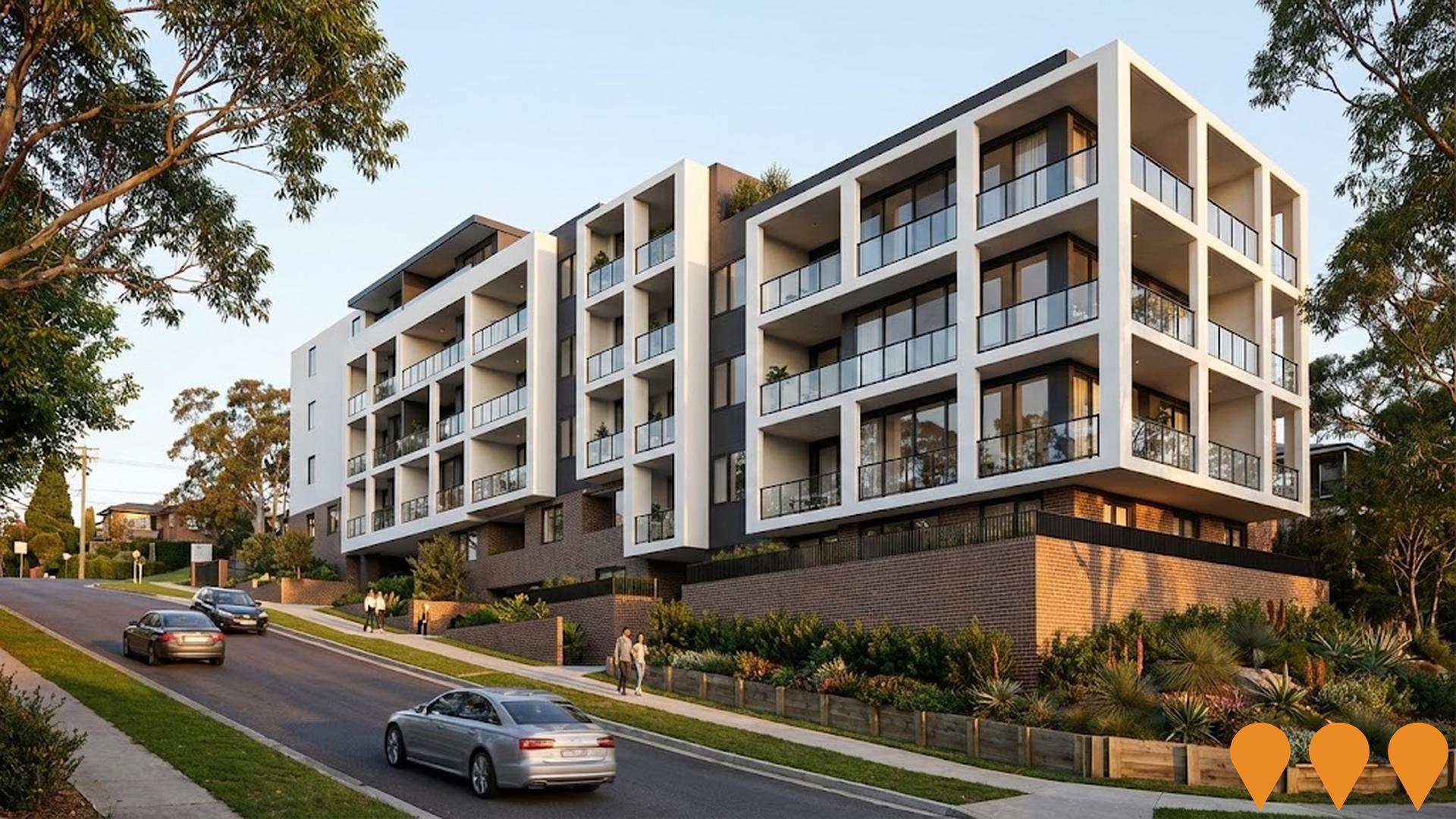
Ginninderry Estate - Stages 4-7 (Strathnairn & future Macnamara)
Canberra's largest master-planned community spanning the ACT-NSW border, delivering approximately 11,500 dwellings total, with ongoing stages immediately adjacent to and west of Dunlop.
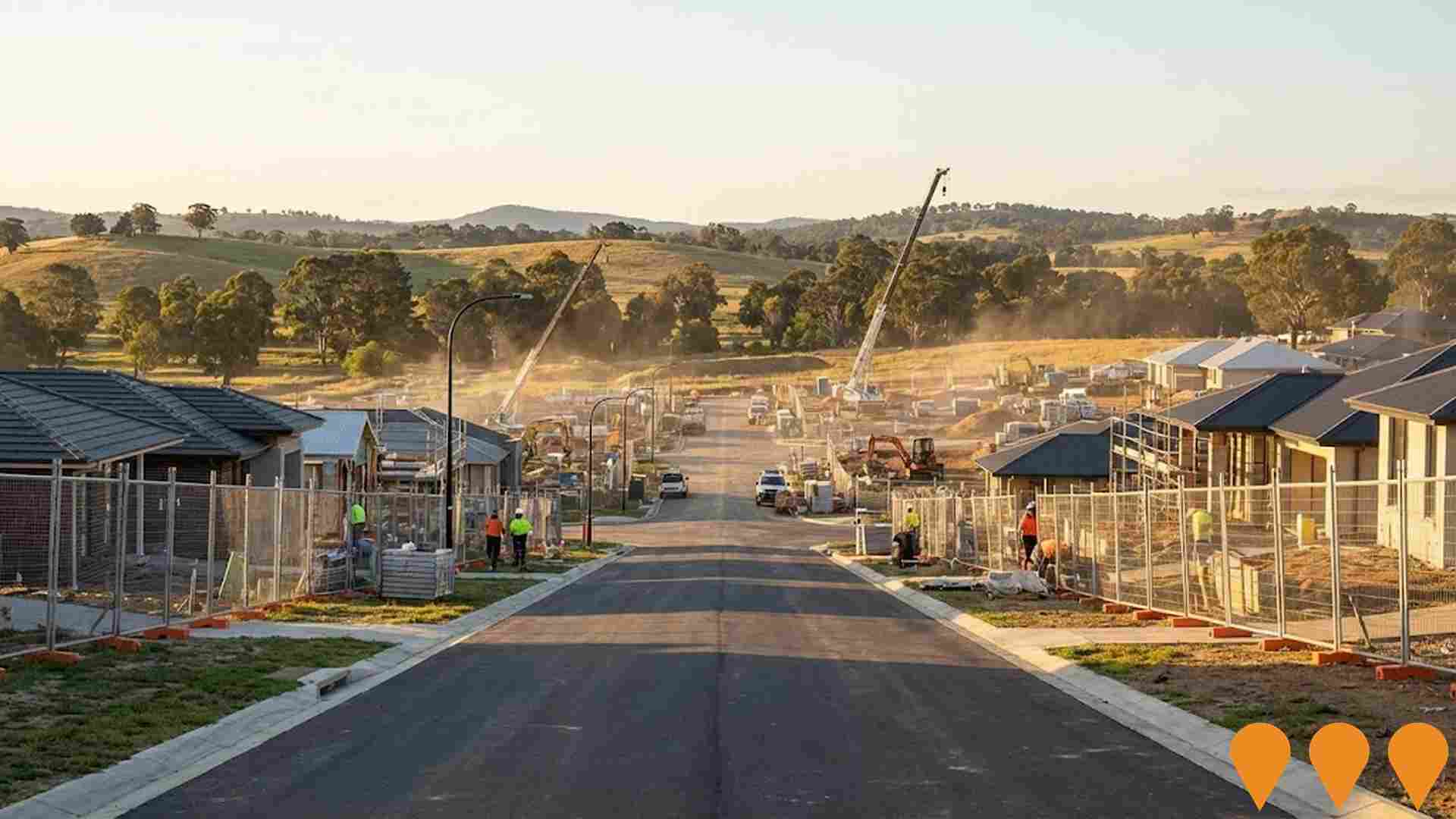
Belconnen Town Centre East Precinct (Republic Phase 2 & Future)
Major mixed-use redevelopment of the former Belconnen Bowling Club site and surrounding land in Belconnen Town Centre (approx. 5 km from Dunlop), delivering apartments, retail, and public spaces.
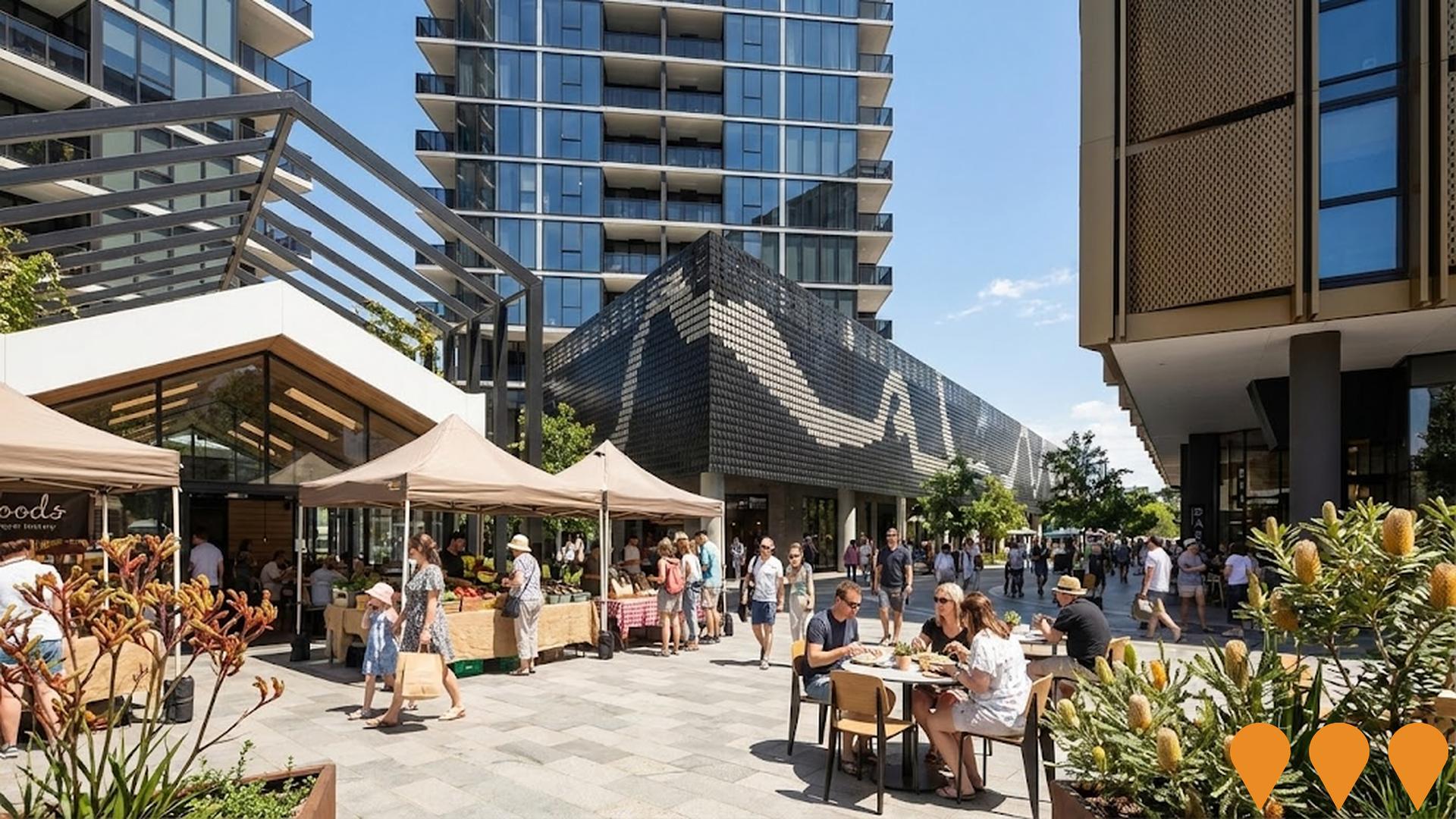
Enhanced bus and light rail corridors (Belconnen & Queanbeyan to Central Canberra)
ACT is progressing an integrated program to enhance high-frequency bus and future light rail corridors that link Belconnen and Queanbeyan with central Canberra. Light Rail Stage 2A (City to Commonwealth Park) commenced construction in early 2025 with services targeted from 2028, while planning and approvals continue for Stage 2B to Woden. The ACT Government has acknowledged and is planning upgrades for the Belconnen-to-City bus corridor as groundwork for a future east-west light rail Stage 3, and is coordinating cross-border public transport initiatives with NSW through the Queanbeyan Region Integrated Transport Plan and the ACT-NSW MoU for Regional Collaboration.
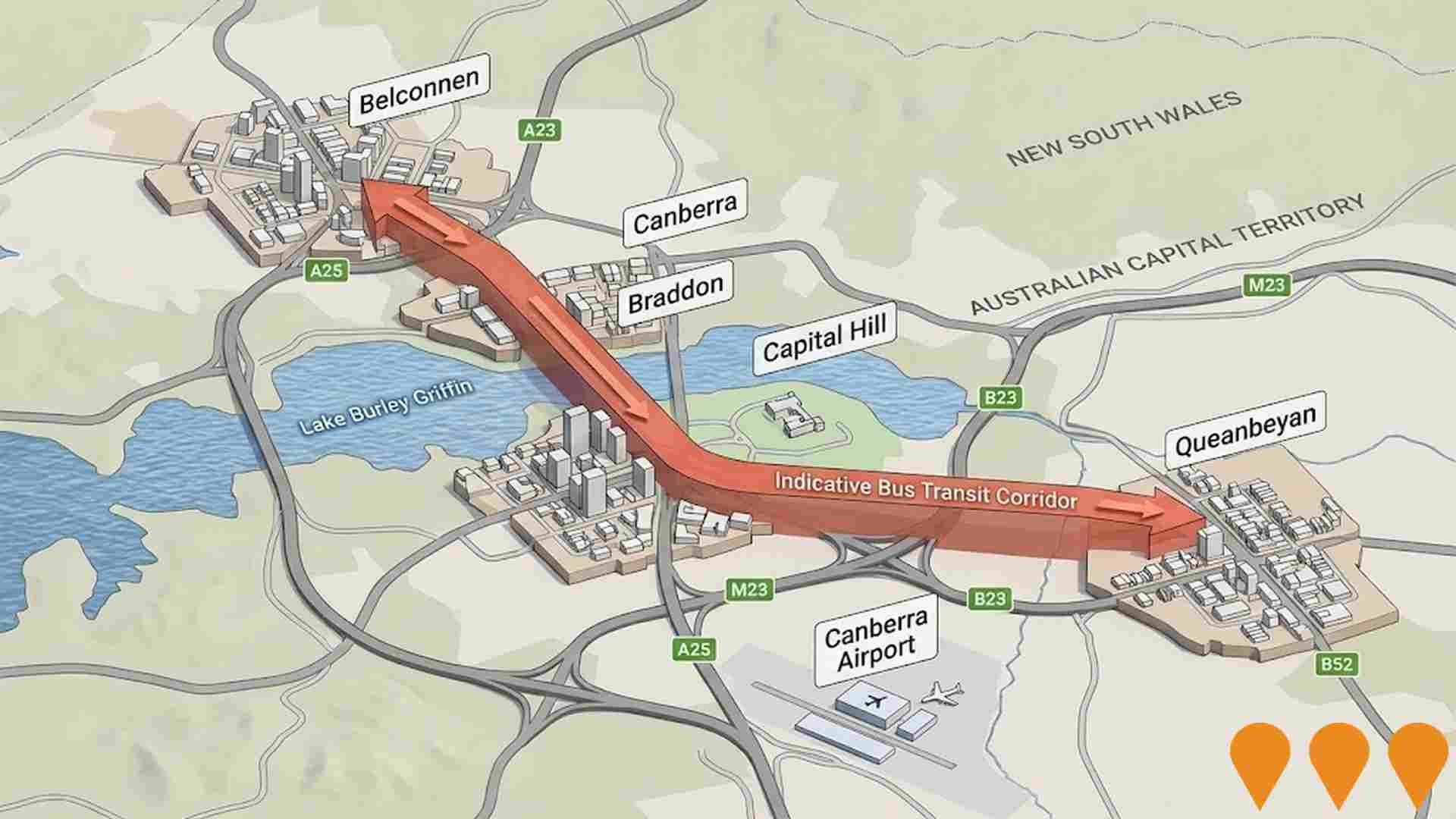
HumeLink
HumeLink is a new 500kV transmission line project connecting Wagga Wagga, Bannaby, and Maragle, spanning approximately 365 km. It includes new or upgraded infrastructure at four locations and aims to enhance the reliability and sustainability of the national electricity grid by increasing the integration of renewable energy sources such as wind and solar.
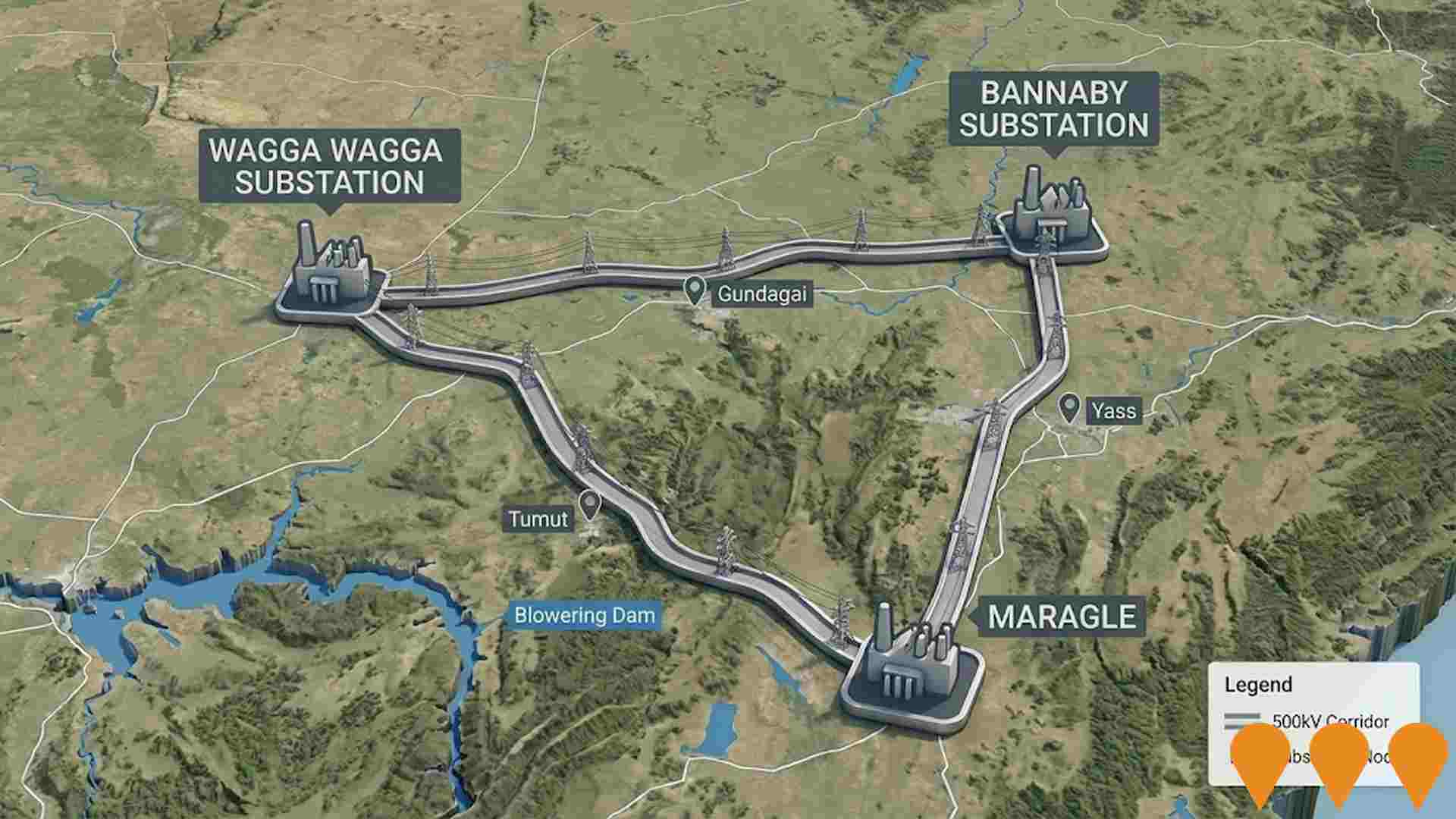
Kippax Fair Expansion & Upgrade
Significant expansion of Kippax Fair town centre serving Macgregor, Holt, and surrounding Belconnen west suburbs, adding new retail tenancies, medical centre, gym, and improved public realm.

Queanbeyan Regional Integrated Transport Plan
Comprehensive transport planning initiative with 64 key actions for next 10 years. Addresses road safety, active transport connectivity, public transport availability, and future transport needs. Improved connections between Queanbeyan and ACT.
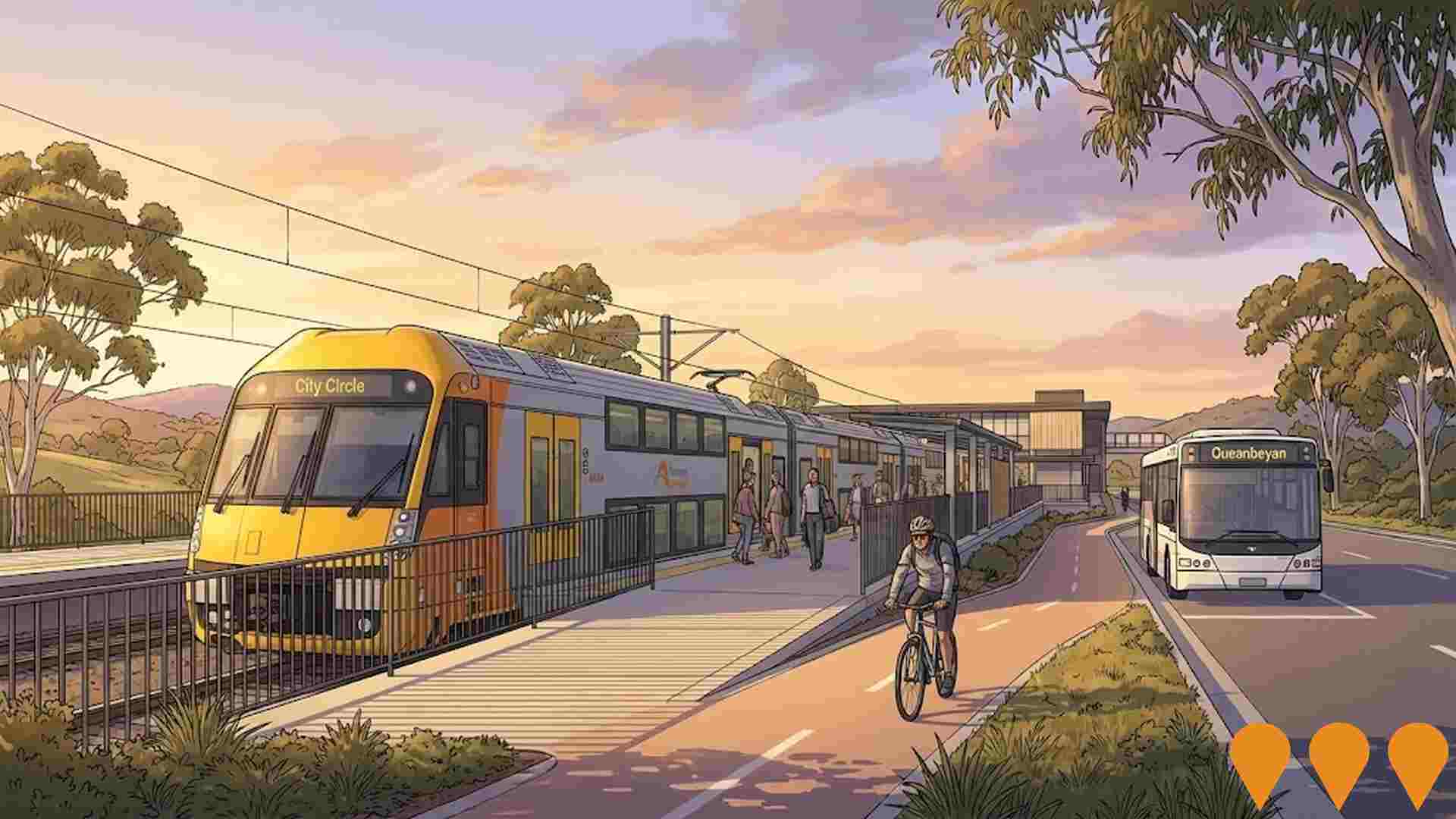
Big Canberra Battery (Williamsdale BESS)
A 250 MW / 500 MWh battery energy storage system at Williamsdale in southern Canberra, delivered by Eku Energy as Stream 1 of the ACT Government's Big Canberra Battery. Construction commenced in November 2024 with partners CPP and Tesla supplying Megapack systems. The asset will connect to Evoenergy's 132 kV network near the Williamsdale substation to provide two hours of dispatchable power, grid services and reliability for the ACT. Target operations in 2026.
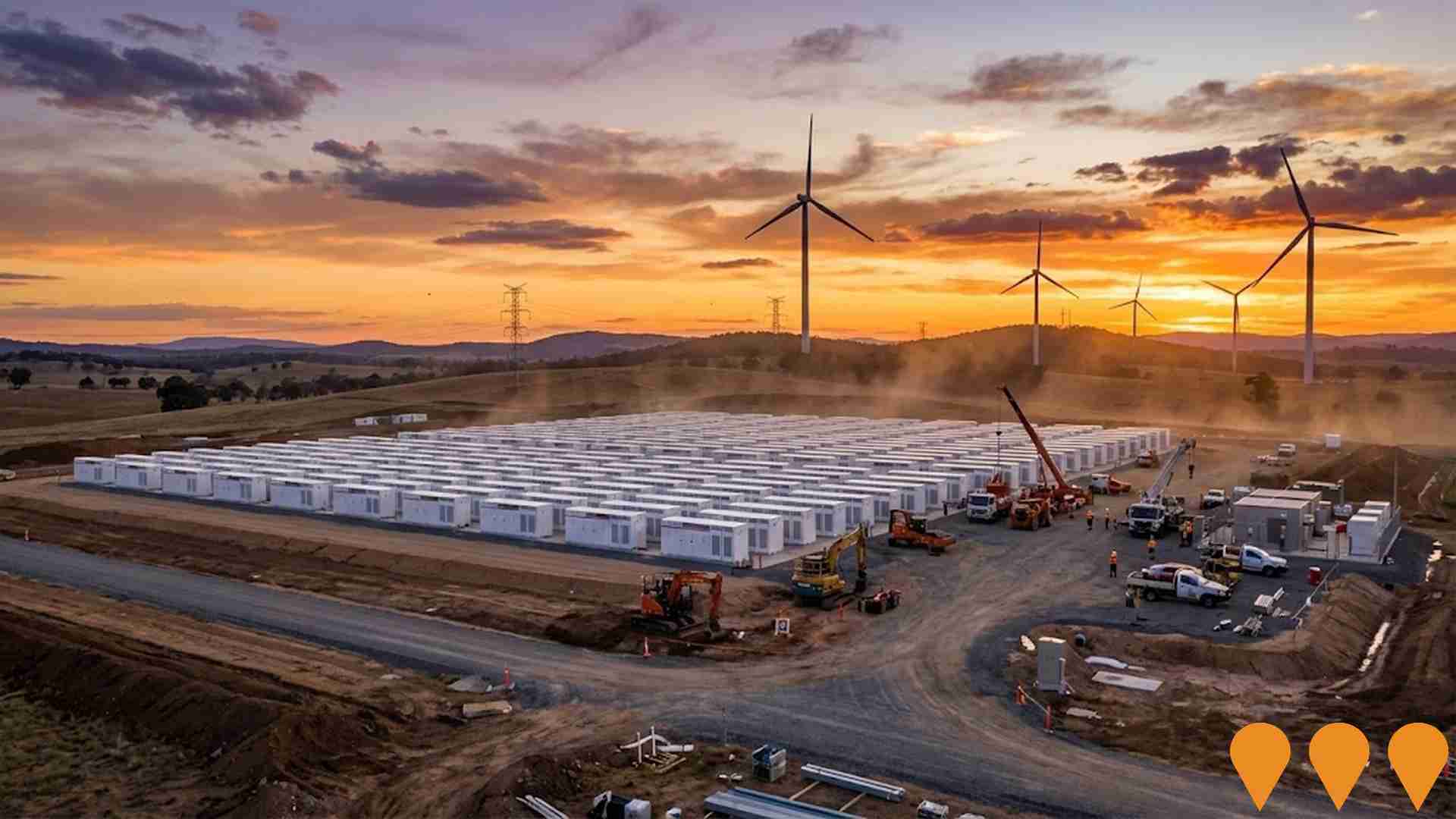
Employment
Employment performance in Scullin has been below expectations when compared to most other areas nationally
Scullin's workforce is highly educated with significant representation in essential services sectors. The unemployment rate was 7.3% as of June 2025.
Employment growth over the past year was estimated at 3.1%. In June 2025, 1,582 residents were employed while the unemployment rate was 3.9%, higher than the Australian Capital Territory's rate of 3.4%. Workforce participation in Scullin was 66.0%, below the Australian Capital Territory's average of 69.6%. Leading employment industries among residents included public administration & safety, education & training, and health care & social assistance.
Education & training had a particularly high share of employment at 1.3 times the regional level. However, public administration & safety had limited presence with 26.3% compared to the regional average of 30.4%. The predominantly residential area offered limited local employment opportunities, as shown by the difference between Census working population and resident population figures. Over a 12-month period ending June 2025, employment increased by 3.1% while labour force grew by 1.5%, leading to a decrease in unemployment rate of 1.4 percentage points. In contrast, Australian Capital Territory experienced employment growth of 1.9% and labour force growth of 1.6%, with a drop in unemployment rate of 0.3 percentage points. Jobs and Skills Australia's national employment forecasts from May 2025 project national employment growth of 6.6% over five years and 13.7% over ten years, but growth rates vary significantly between industry sectors. Applying these projections to Scullin's employment mix suggests local growth of approximately 6.6%% over five years and 13.5% over ten years, though this is a simple extrapolation for illustrative purposes and does not account for localized population projections.
Frequently Asked Questions - Employment
Income
Income metrics indicate excellent economic conditions, with the area achieving higher performance than 75% of national locations assessed by AreaSearch
As per AreaSearch's latest postcode level ATO data released on 30 June 2022 for financial year 2022, Scullin's median income among taxpayers is $58,166. The average income in Scullin for the same period was $72,994. Nationally, these figures are high compared to the Australian Capital Territory's median of $68,678 and average of $83,634. Based on Wage Price Index growth of 13.6% since financial year 2022, current estimates for Scullin would be approximately $66,077 (median) and $82,921 (average) as of September 2025. According to the 2021 Census figures, incomes in Scullin cluster around the 74th percentile nationally. The predominant income cohort spans 33.3% of locals (1,017 people), falling into the $1,500 - 2,999 category. This pattern is similar to the surrounding region where 34.3% occupy this range. Economic strength in Scullin is evident with 30.5% of households achieving high weekly earnings exceeding $3,000, supporting elevated consumer spending. High housing costs consume 15.2% of income, but strong earnings place disposable income at the 68th percentile nationally. The area's SEIFA income ranking places it in the 7th decile.
Frequently Asked Questions - Income
Housing
Scullin is characterized by a predominantly suburban housing profile, with a higher proportion of rental properties than the broader region
In Scullin, as per the latest Census evaluation, 79.9% of dwellings were houses, with the remaining 20.0% being semi-detached, apartments, or other types. This compares to the Australian Capital Territory's figures of 69.4% houses and 30.5% other dwellings. Home ownership in Scullin stood at 27.4%, with mortgaged dwellings at 39.6% and rented ones at 33.1%. The median monthly mortgage repayment was $1,950, below the Australian Capital Territory average of $2,000. The median weekly rent in Scullin was $390, compared to the Australian Capital Territory's $430. Nationally, Scullin's mortgage repayments were higher than the Australian average of $1,863, while rents exceeded the national figure of $375.
Frequently Asked Questions - Housing
Household Composition
Scullin features high concentrations of group households, with a higher-than-average median household size
Family households account for 69.0% of all households, including 32.6% couples with children, 22.9% couples without children, and 12.0% single parent families. Non-family households constitute the remaining 31.0%, with lone person households at 27.2% and group households comprising 3.8%. The median household size is 2.6 people, which is larger than the Australian Capital Territory average of 2.5.
Frequently Asked Questions - Households
Local Schools & Education
Scullin shows strong educational performance, ranking in the upper quartile nationally when assessed across multiple qualification and achievement indicators
Educational attainment in Scullin is notably high, with 42.5% of residents aged 15 years and above holding university qualifications compared to the national average of 30.4%. Bachelor degrees are the most common at 24.7%, followed by postgraduate qualifications (12.8%) and graduate diplomas (5.0%). Vocational credentials are also prevalent, with 26.5% of residents aged 15 years and above holding such qualifications - advanced diplomas (9.7%) and certificates (16.8%). Educational participation is high, with 32.5% of residents currently enrolled in formal education.
This includes 10.7% in primary education, 6.9% in secondary education, and 6.8% pursuing tertiary education. Southern Cross Early Childhood School provides local educational services within Scullin, enrolling 113 students as of the latest data. The area has above-average socio-educational conditions (ICSEA: 1088). There is one school in Scullin focusing exclusively on primary education, with secondary options available in surrounding areas. School capacity is limited locally (3.7 places per 100 residents compared to the regional average of 15.1), leading many families to travel for schooling.
Frequently Asked Questions - Education
Schools Detail
Nearby Services & Amenities
Transport
Transport servicing is good compared to other areas nationally based on assessment of service frequency, route connectivity and accessibility
Scullin has 16 active public transport stops, all of which are bus stops. These stops are served by four different routes that together facilitate 952 weekly passenger trips. The accessibility to these services is rated as excellent, with residents typically located just 177 meters away from the nearest stop.
On average, there are 136 daily trips across all routes, which equates to approximately 59 weekly trips per individual stop.
Frequently Asked Questions - Transport
Transport Stops Detail
Health
Scullin's residents are relatively healthy in comparison to broader Australia with the level of common health conditions among the general population somewhat typical, though higher than the nation's average among older cohorts
Scullin's health metrics are close to national benchmarks, with common health conditions among its residents being somewhat typical of the general population but higher than the national average among older cohorts.
Approximately 56% (~1,710 people) of Scullin's total population has private health cover, which is very high compared to other areas. The most prevalent medical conditions in Scullin are mental health issues and asthma, affecting 10.2% and 9.2% of residents respectively. About 68.5% of residents claim to be completely free from medical ailments, similar to the 68.1% across the Australian Capital Territory. Scullin has a lower proportion of seniors aged 65 and over at 13.5% (413 people) compared to the Australian Capital Territory's 15.3%. However, health outcomes among seniors in Scullin require more attention than those for the broader population.
Frequently Asked Questions - Health
Cultural Diversity
Scullin was found to be more culturally diverse than the vast majority of local markets in Australia, upon assessment of a range of language and cultural background related metrics
Scullin's population was found to be more culturally diverse than most local markets, with 27.1% born overseas and 24.1% speaking a language other than English at home. Christianity was the predominant religion in Scullin, accounting for 37.1% of its population. Notably, Buddhism was overrepresented in Scullin compared to the Australian Capital Territory, comprising 3.4% versus 3.0%.
In terms of ancestry, the top three groups were Australian (23.8%), English (23.3%), and Other (13.8%). Some ethnic groups had notable representation differences: Polish was overrepresented at 1.1% in Scullin compared to 0.8% regionally, Spanish at 0.7% versus 0.5%, and Hungarian at 0.4% versus 0.3%.
Frequently Asked Questions - Diversity
Age
Scullin's population is younger than the national pattern
Scullin's median age is 35, matching the Australian Capital Territory figure but lower than Australia's 38 years. Compared to the Australian Capital Territory, Scullin has a higher proportion of residents aged 5-14 (14.2%) but fewer residents aged 15-24 (11.4%). Between the 2021 Census and present, the 5-14 age group has increased from 13.1% to 14.2%. Conversely, the 45-54 cohort has decreased from 12.6% to 11.2%, and the 65-74 cohort has dropped from 7.8% to 6.5%. By 2041, Scullin's population is projected to see significant demographic changes. The 85+ cohort is expected to grow by 51%, adding 27 residents to reach 82. Residents aged 65 and older are anticipated to represent 89% of the growth. Meanwhile, the 55-64 and 75-84 cohorts are projected to experience population declines.



